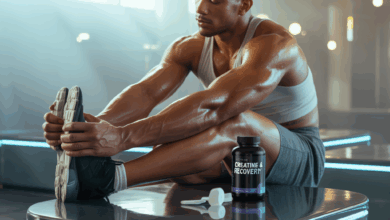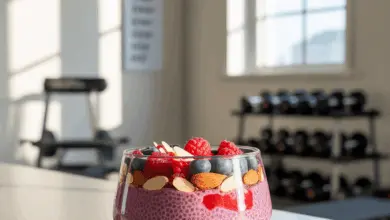How Many Calories Do Hip Thrusts Burn

Have you ever finished a heavy set of hip thrusts and wondered, “how many calories do hip thrusts burn?” You’re not alone — whether you’re chasing fat loss, stronger glutes, or a toned posterior, it’s natural to want a clear number. The short answer: it depends. In this article I’ll break down realistic calorie estimates, explain why hip thrusts are so valuable beyond calorie burn, and give practical tips and workout variations to maximize results.
Why hip thrusts matter (more than just calorie counting)
Hip thrusts — often called the king of glute exercises — target the gluteus maximus through a powerful hip extension movement. While they won’t torch calories like running for an hour, hip thrusts build muscle in one of the body’s largest muscle groups. More muscle → higher resting metabolic rate, better posture, improved athletic performance, and more efficient day-to-day calorie burning.
How many calories do hip thrusts burn — realistic estimates
There isn’t a one-size-fits-all number. Calorie burn varies by:
- Body weight (heavier people burn more calories for the same activity)
- Intensity and load (heavy barbell sets vs. bodyweight reps)
- Duration and structure (continuous circuit vs. sets with long rests)
- Your fitness level and technique
Using metabolic equivalents (METs) and common formulas, you can estimate calories per minute. Strength training typically ranges from 3 to 6 METs depending on intensity. A practical rule of thumb:
- Light/moderate hip thrust session: ~3–5 calories per minute for an average person
- Intense, heavy barbell hip thrusts or circuits: ~6–9 calories per minute
Example estimates (approximate):
- 70 kg (154 lb) doing moderate hip thrusts: ~5–7 calories/min → a 20-minute session ≈ 100–140 calories
- 90 kg (198 lb) doing moderate to intense hip thrusts: ~7–9 calories/min → a 20-minute session ≈ 140–180 calories
Keep in mind: typical hip thrust workouts include short bursts of activity and rest periods. If you perform 5 sets of 8–12 reps with rest between sets, actual active time may only be 5–8 minutes, so the immediate calorie burn will be modest — but the metabolic benefits continue after the workout.
Afterburn and muscle-building effects
Strength training produces excess post-exercise oxygen consumption (EPOC), meaning your body keeps burning calories as it recovers. Plus, adding lean glute muscle increases your resting metabolic rate over time. So hip thrusts contribute to long-term calorie burn even if the instantaneous calorie numbers are lower than steady-state cardio.
Practical tips to increase calorie burn from hip thrusts
- Increase intensity: Progressively add resistance with a barbell or heavier bands to recruit more muscle fibers.
- Reduce rest times: Shortening rest from 2–3 minutes to 60–90 seconds raises average intensity and calories burned per minute.
- Use supersets or circuits: Pair hip thrusts with reverse lunges, kettlebell swings, or jump rope to keep heart rate elevated.
- Try higher-rep finishers: After heavy sets, do a drop set or 20–30 bodyweight pulse reps to increase metabolic stress.
- Track progressive overload: Improving strength means lifting heavier over time, which boosts calorie cost and muscle mass.
Hip thrust workout variations for different goals
Here are options depending on whether you want strength, hypertrophy, or a cardio-style calorie burn.
Strength focus
- Barbell hip thrusts: 4–6 sets of 4–6 reps, 2–3 minutes rest
- Emphasis: heavy load, full glute squeeze at the top
Hypertrophy (glute growth)
- Barbell hip thrusts: 3–5 sets of 8–12 reps, 60–90 seconds rest
- Add banded pulses or pause reps for extra time under tension
Metabolic/conditioning
- Circuit: 10 hip thrusts (moderate weight) → 12 kettlebell swings → 30s jump rope, repeat 4–6 rounds
- Short rests and continuous movement increase calories burned during the session
Healthy lifestyle advice to support calorie goals
- Nutrition matters: To lose fat, pair your strength training with a moderate calorie deficit and quality protein intake to preserve muscle. Check our nutrition guides for meal ideas and macro tips.
- Consistency wins: Do hip thrusts 2–3 times per week as part of a balanced program. Combine with lower-body compound lifts like squats and deadlifts for full-leg development.
- Mix movement types: Add cardio sessions or high-intensity intervals to increase weekly calorie expenditure.
- Recovery: Prioritize sleep, mobility work, and progressive overload to allow muscle growth and sustainable fat loss.
If you need a structured plan, explore our workout routines to find beginner and advanced templates that include hip thrust variations.
Real-world example: A sample session and estimated calories
Sample session (moderately intense):
- Warm-up: 5 minutes dynamic mobility
- Barbell hip thrusts: 4 sets x 10 reps, 90s rest
- Banded glute bridges: 3 sets x 20 reps, 30s rest
- Reverse lunges: 3 sets x 12 reps per leg
- Cool-down: light stretching
Estimated calories burned (70 kg person): ~120–180 calories total. Again, this is an estimate — actual numbers depend on pace, rest, and effort — but coupling this session with other training and a calorie-aware diet produces meaningful results over weeks and months.
Frequently Asked Questions
1. How many calories do hip thrusts burn per hour?
Per hour estimates are misleading because hip thrust workouts involve rest and short bursts. Using MET estimates, a continuous, intense strength session could burn 300–500 calories/hour for many people, but a realistic hip thrust session with rests will usually burn far less (often 100–250 calories). Focus on session intensity and weekly consistency rather than hourly figures.
2. Are hip thrusts good for fat loss?
Yes — indirectly. Hip thrusts build valuable glute muscle, which raises resting metabolic rate and improves overall strength. Combined with a calorie deficit, regular hip thrust training helps preserve muscle while you lose fat, leading to better body composition.
3. Can I increase calorie burn from hip thrusts without adding weight?
Absolutely. Use techniques like shorter rest periods, higher reps, banded resistance, single-leg variations, or include hip thrusts in a circuit to keep your heart rate up and increase total calories burned.
Conclusion — Take action and measure what matters
So how many calories do hip thrusts burn? There’s no single number — expect modest direct calorie burn during a typical session (often 100–200 calories), but significant long-term benefits through muscle growth and improved metabolism. To get the most from hip thrusts, prioritize progressive overload, combine them with conditioning, and follow smart nutrition. Try one of the sample variations above this week and track how you feel.
Ready to build stronger glutes and boost your calorie burn? Check our workout routines and wellness tips for programs that include hip thrusts and full-body plans. Share your favorite variation in the comments and let’s keep each other accountable!





